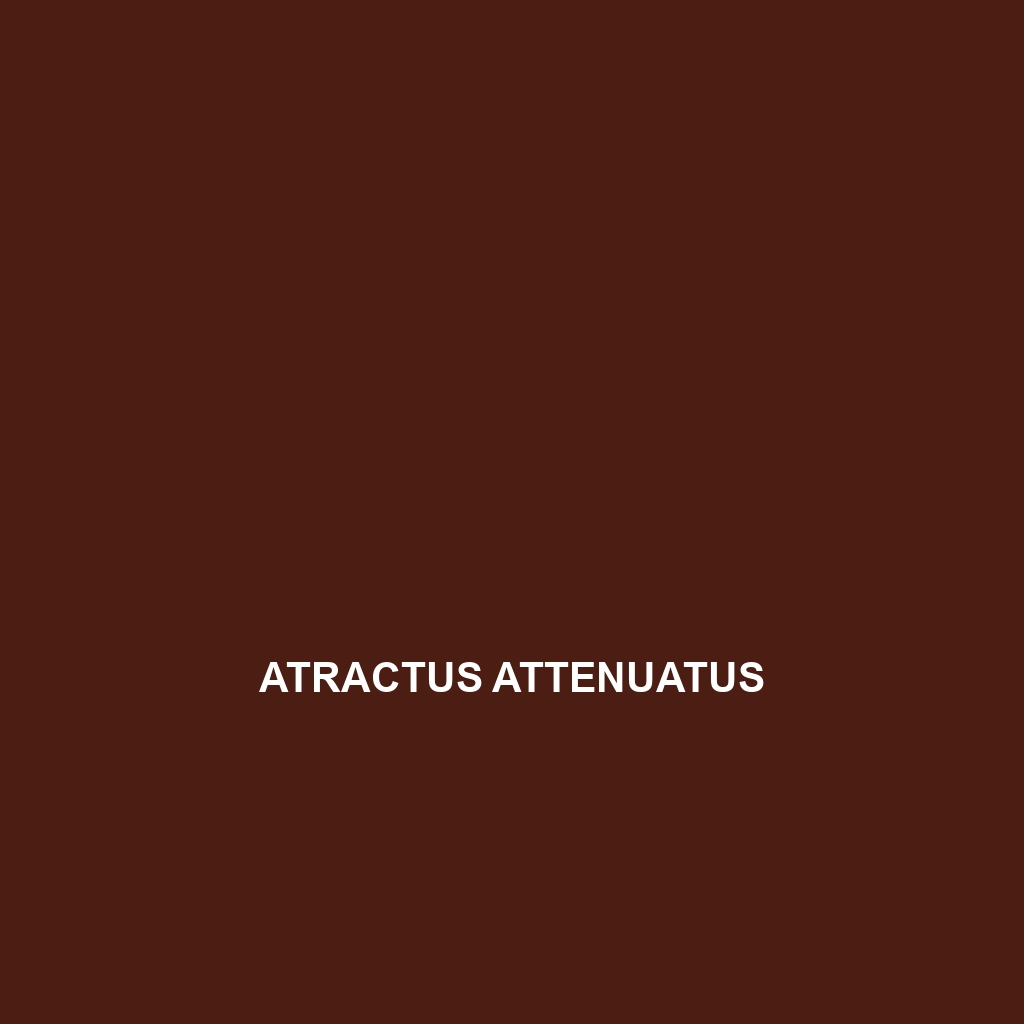Atractus atratus Species Description
Common Name: Atractus atratus
Scientific Name: Atractus atratus
Habitat
Atractus atratus is primarily found in the tropical regions of South America, particularly in countries such as Colombia, Ecuador, and Venezuela. This species predominantly inhabits dense rainforests and humid lowland areas, where it thrives in moist environments. It is often discovered in leaf litter and undergrowth, making it well-adapted to its forested habitat.
Physical Characteristics
Atractus atratus is a slender, non-venomous snake that can grow to an average length of 60 to 80 centimeters (24 to 31 inches). The coloration of this species typically features a shiny black body with distinctive yellow or white markings, providing effective camouflage amidst the forest floor. Its smooth scales and elongated form contribute to its streamlined appearance, making it proficient in navigating through leaf litter.
Behavior
Known for its secretive nature, Atractus atratus is primarily nocturnal, becoming active during the night to hunt for prey. This species exhibits a burrowing behavior, often hiding beneath leaves and soil during the day. Its docile demeanor makes it less inclined to display aggression; however, it will hiss and attempt to escape if threatened. This behavior enhances its survival, as it prefers to avoid confrontation with larger predators.
Diet
Atractus atratus feeds mainly on small invertebrates, including worms, slugs, and insects. It has been observed employing a constricting method to subdue its prey, which allows it to efficiently consume its food sources. The diet of Atractus atratus plays a crucial role in controlling the population of its prey species, thus maintaining ecological balance.
Reproduction
The breeding season for Atractus atratus usually occurs during the rainy months, which provides an ideal environment for mating and the gestation of offspring. Females typically give birth to a live litter of 6 to 15 young snakes. After birth, the juveniles are independent and exhibit similar behaviors to adults, quickly adapting to their habitat.
Conservation Status
Currently, Atractus atratus is classified as Least Concern by the IUCN Red List. However, habitat loss and deforestation pose significant threats to its populations. Conservation efforts are crucial to preserving its natural habitat and ensuring the stability of local ecosystems.
Interesting Facts
Atractus atratus is often referred to as the “black earth snake” because of its striking coloration. This species is not only important for local biodiversity but is also a subject of research regarding its ecological interactions and adaptability to changing habitats.
Role in Ecosystem
Atractus atratus plays a vital role in its ecosystem as both predator and prey. By consuming invertebrates, it helps regulate their populations, contributing to the health of the rainforest floor. Additionally, it serves as a food source for larger predators, thus maintaining the food web balance. Its presence is indicative of a healthy ecosystem, highlighting the interconnectedness of species within its habitat.
